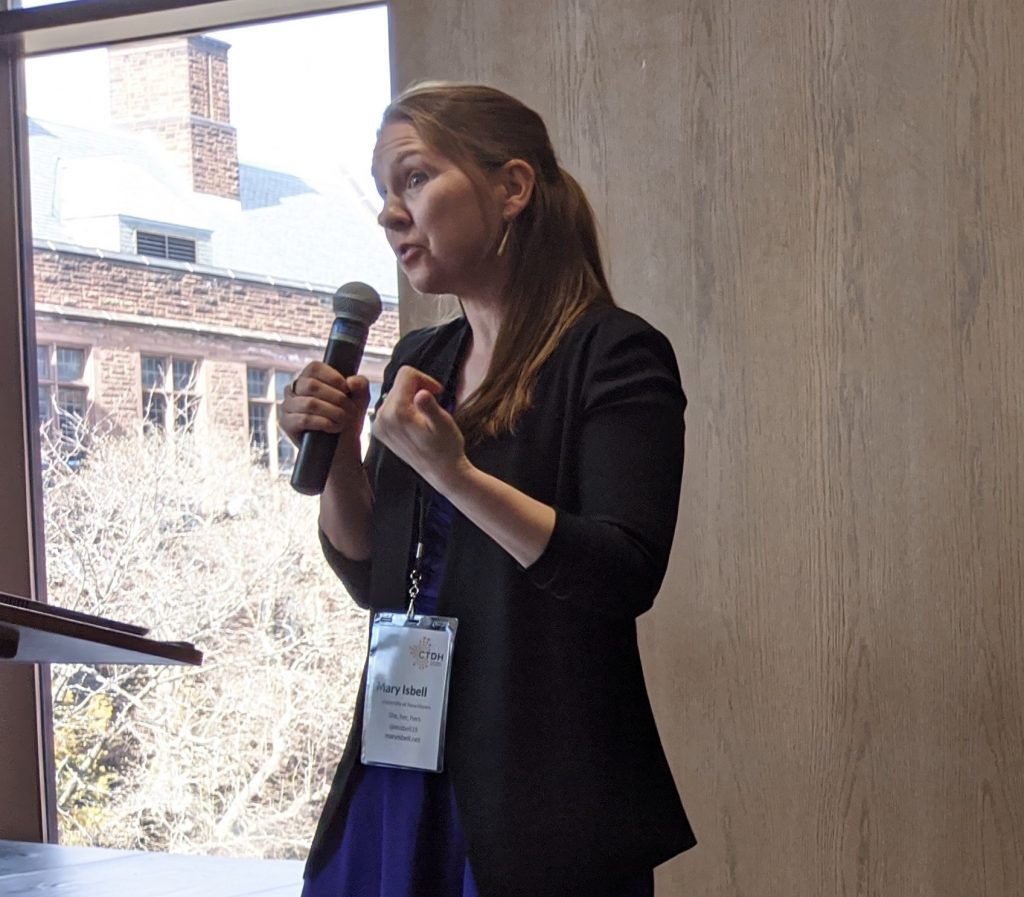The faculty members on this page have completed the open pedagogy fellowship, worked with OER and open pedagogy in the classroom, and love talking about it with colleagues! If you want to learn more, please don’t hesitate to reach out by e-mail to ask a question or set up a time to chat.
Really…get in touch!

I love watching how students take more ownership over their learning when they know that what they are working on won’t just die on my desk but will live on to benefit future students.
Matt Wranovix, Ph.D., History
Before I started with Open Pedagogy, I suffered from too much anxiety about how to handle all the small errors and blemishes that inevitably appear in student-produced resources. I wish I had been more comfortable with the idea that public work doesn’t have to be perfect work, and in fact imperfections can actually provide learning opportunities for the next semester’s students.
Tools I’ve used: Hypothesis, Omeka, Neatline, Word Press, Open Lab.
Techniques I’ve tried: I’ve developed Learning Objectives with students, allowed students to determine the last few weeks of course content, built websites and maps with students.

With open pedagogy, I love to see how students’ hesitation about learning differently turns into excitement as they become more engaged. OER has also helped me to find more engaging materials and blend them together for what we are learning about.
Laura M. Silva, M.S. CCC-SLP, Rehabilitation Sciences and Wellness
Before I started with open pedagogy, I wish I’d realized that you don’t have to know it all right away. It’s OK for you to keep learning alongside your students and not have all of the answers.
Tools I’ve used: OpenLab
Techniques I’ve tried: I’ve collaborated with students on a syllabus, adopted open resources for my course, co-created resources with students, and gotten feedback from a former student as I was revising a course.

Students are creative beyond measure when given freedom to explore their passions.
Yanice Méndez-Fernández, Ph.D., MPH, Health Sciences
Before I started with open pedagogy, I wish I’d realized that we make assumptions about what students know. For example, my project involved the creation of interdisciplinary case studies, but students did not have a good understanding of what a case study is or what is used for, even though I used many examples throughout the semester.
Tools I’ve used: Soft chalk for open access assignments available to other instructors (gradable and links to the grade book on Canvas); Hypothesis for commenting on documents to be used for the case study; google docs to write a case study with the students.
Techniques I’ve tried: Students provide feedback during the semester. I’ve adopted, adapted, and created OER with students and used renewable assignments.

I love that open pedagogy helps me show students that they can have a real impact with the work they do in my courses.
Mary Isbell, Ph.D., English
Before I started with open pedagogy, I wish I’d realized that it doesn’t have to be perfect before I share with students! We have more fun and they learn more when we make decisions together.
Tools I’ve used (and am happy to discuss): Hypothesis, Pressbooks, OpenLab, Zotero, Wiki Education, GitHub Education, H5P
Techniques I’ve tried: Students annotate my syllabus and assignment prompts and provide anonymous feedback during the semester. I’ve adopted, adapted, and created OER with students and used renewable assignments.

I was excited to discover that students demonstrated a higher enthusiasm to learn and apply course content to real-world clinical experiences. Students reported using the OER to study for their quizzes and exams.
Sandra D’Amato-Palumbo, R.D.H., M.P.S ., E.d.D., Allied Health
Before I started learning and using H5P, I didn’t realize how well it accommodates different learning styles: the auditory, visual, read/write, and kinesthetic learners. For example, the interactive content includes videos, images, words, assessments, activities, sounds, and simulation games.
Tools I’ve used: H5P empowers educators to create rich and interactive web experiences more efficiently – all you need is a web browser and a website with an H5P plugin. The H5P plugin is also visible in Canvas.
Techniques I’ve tried: I’ve collaborated with students on a syllabus, adopted open resources for my course, co-created resources with students, and gotten feedback from students (during and after the semester)

It’s been fun to watch my students gradually take ownership over the content of a course website that we built together. They went from merely “completing an assignment” — just following instructions — to a much higher level of engagement: helping each other revise their work and including more and more embedded images and videos in their posts.
D. Edward Davis, Ph.D., Music
Before I got started, I wish I had realized that most of the WORK of learning how to “think in OER” has to happen in the classroom, with students, in real time. I thought I would start the semester with a completely new bag of tricks — instead I filled the bag gradually throughout the course, as it became clear which techniques and ideas clicked with my students.
Tools I’ve used: Google Docs/Sheets, OpenLab, Audacity,
Techniques I’ve tried: I’ve created open resources for use in my course, asked students to give feedback during the semester, and asked for feedback from a former student as I revise a course for future students.